What 3 D Printer Is Best For Mass Production
-
 View now at Stratasys.com
View now at Stratasys.com -
 View now at Desktop Metal
View now at Desktop Metal -
 View now at Sindoh
View now at Sindoh -
 View now at Stacker 3D
View now at Stacker 3D -
 View now at BCN3D Show More (7 items)
View now at BCN3D Show More (7 items)
3D printers have come a long way in the past few years.
Do you want to get started in the wonderful world of 3D printing technology, but don't want to spend too much money? Well, you're in luck. You can get started for as little as $100 (although things start to get better over about $200). We present a batch of really great 3D printer options for beginners that will have you cranking out Baby Yoda replicas in no time.
Initially relegated to large industrial processes, they experienced a bit of a boom in the mid-2010s, when the technology became affordable to small offices, design firms, and hobbyists. Since then, 3D printers have evolved along with a number of vectors. Low-cost, high-resolution resin printers have joined filament-based (or FDM) printers in the home and hobbyist market. Printers with large print areas have become available at both the low and high end, with lower-end printers optimizing for the very basic heated plates needed for large prints, while the higher-end solutions add sealed chambers, temperature management, touchscreens, and cameras. Printers with dual extruders are becoming more common, and the slicing software needed to prepare prints is becoming more sophisticated. We're also starting to see more full color and metal printing.
In this guide, we award best-of-show for a range of printer categories. We're spotlighting the machines based on where they're best used. We're starting with the most expensive offerings and ending with our favorite under-$200 printer.
Stratasys Fortus 450MC
Best exotic plastics industrial printer
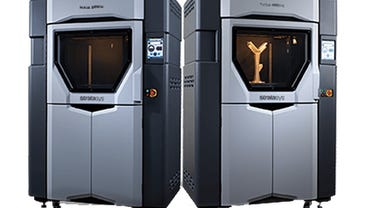
Stratasys is a well-known name in the industrial 3D printing space, and Fortus 450MC has been around for a while. So while it's not the most recently introduced 3D printer, this $100K+ printer makes its place on our list because its fully-enclosed 406 x 355 x 406 mm print area can reliably produce carbon fiber, nylon, carbon fiber-infused nylon, and advanced resin-based filament night and day, without breaking a sweat.
If you're building prototypes you intend to use rather than just show off, this printer can produce tough parts with tight tolerances for use in industrial applications. Our friends at Fargo 3D Printer Repair tell us, "Overall a solid machine from a reputable company, we like the additional size of the 450mc over the 380mc."
Desktop Metal Studio System+
Best office-sized metal printer

Most 3D printers melt or fuse plastic to produce 3D objects. The Desktop Metal Studio System+ is a fascinating offering because it can produce 3D metallic parts made of steel, aluminum, copper, and even titanium. Physically, the machine can fit onto a desk or a workbench and doesn't require an entire factory environment to create prototypes the company says are the equivalent in strength and characteristics as injection molded parts.
There's some serious materials science going on here. Using a process called Bound Metal Deposition, the printer uses bound metal rods that are analogous to filament in FDM plastic printers. The source material contains a mix of metal, wax, and polymer binders, which allows the object to be printed on the build plate. Once the object has been printed, it needs to be placed into a tank where a solution dissolves the primary binding agent and creating a series of open channels within the object. The final stage of post-processing involves the use of a sintering furnace, which heats the finished object to a point before liquefaction, causing the object to become a solid mass.
What intrigues us most is the office setting this printer can function in. The company says there's no need for respirators or external ventilation, which means this $120,000 device can coexist in a design environment without special environmental accommodations.
Sindoh 3DWOX 7X
Best industrial 3D printer for flexible objects
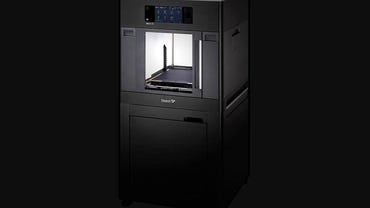
With the ability to extrude layers as fine as 0.5mm, the 7X is quite capable of fine detail. We didn't award it our best-for-fine-detail 3D printing prize because the Formlabs Form 3 (see below) can produce even finer resolutions. Where the 7X really shines, however, is its rock-solid reliability when it comes to producing flexible parts. Because it supports direct extrusion (rather than bowden-style), the filament has little opportunity to bind up before being laid down on the print bed.
At approximately $15,000, this is a large format printer, with a build area of 370 x 390 x 450mm. It supports Ethernet and wireless connectivity and uses filament print cartridges that allows an ease of use when swapping of filament without the hassle of fighting with the extruder. Our friends at Fargo 3D Printer Repair tell us, "A fantastic printer for flexibles and fine detail work."
Stacker S4 Industrial
Best four-head industrial 3D printer
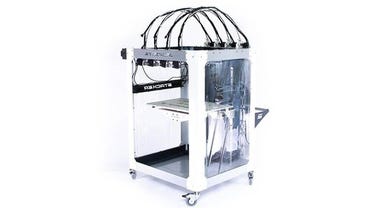
The product's name says it: The $10,999 Stacker S4 is an industrial-grade 3D printer with the ability to print huge prints and use up to four extruders at once. The build plate is an absolutely enormous 345 x 520 and you can print objects as tall as 650 mm (that's more than 25-inches for those of us more familiar with imperial measurements).
But the stand-out feature of this made-in-America printer is the four print heads. It's possible to print with 1, 2, 3, or all four print heads, and if you print with fewer heads, you can remove them to increase the overall build area. This allows for tremendous low-volume production gains and manufacturing efficiencies. Our friends at Fargo 3D Printer Repair tell us, "This printer's multi-head capabilities are fantastic for a wide variety of uses depending on the application."
BCN3D Epsilon W50
Best fully-enclosed, filtered large format printer
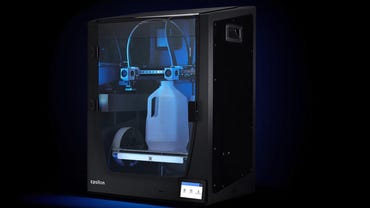
The BCN3D Epsilon W50 is an industrial-level plastic FDM printer designed for heavy production use and additive manufacturing. With a price tag of 6,995€ (about $8,473 at the current exchange rate), the machine has an enormous 420 x 300 x 400mm build area. Normally, it's difficult to 3D print parts this large because the temperature variations from the center to the edges tend to cause warping and layer failure. But because the BCN3D Epsilon has a fully-enclosed build area, it's able to maintain even heat throughout the build process, substantially increasing the reliability and predictability of large part printing.
What makes this product a standout is not that it has two extruders. Other best-of-show products we're spotlighting do as well. Instead, it's the company's Independent Dual Extrusion System (or IDEX) printing technology, which allows both extruders to work independently of each other. The printer has duplication and mirror modes where two identical (or mirrored) objects can be extruded simultaneously. The printer is capable of printing a wide range of industrial-grade materials developed by BASF and Mitsubishi Chemical. It also has HEPA and carbon filters, so the printer can be safely used either in an office environment or on a factory floor.
Ultimaker S5
Best large format dual-extruder professional printer
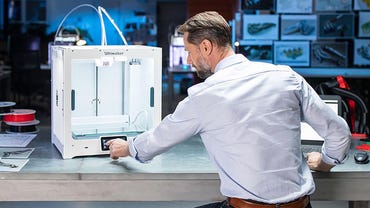
There's a lot to like about the $6,000 flagship Ultimaker with its 330 x 240 x 300 mm build volume. Although the entire build chamber isn't sealed, the S5's glass front doors seal in quite a bit of the heat, contributing to excellent print quality every time. You can also get two add-ons that fully heat seal the S5 - an enclosed cover and a filament feeding system that protects a small library of filament spools as they feed in from the bottom of the machine.
Also: Is the Ultimaker S5 the ultimate Ultimaker 3D printer?
My favorite aspect of the S5 is how easy it is to load filament. The filament feed system simply slots open, you feed in your filament, and close the latch. It's rock-solid reliable and virtually zero hassle. The S5 comes with a heated bed, it auto-trams by testing a grid of points along the bed surface, has a dual extruder system with removable and customizable print heads and has a built-in camera. You can control one or a fleet of Ultimaker either via Ethernet or wirelessly via Ultimaker's Cura slicer and printer control environment. I often transfer models straight from my Fusion 360 computer-aided design environment right to the Ultimaker, which saves both time and steps. This is an ideal machine for rapid prototyping and low-volume manufacturing.
MakerBot Method
Best printer redesign
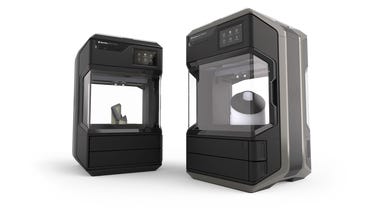
MakerBot -- a pioneer in desktop 3D printers -- has had its ups and downs over the years. The very first 3D printer I ever used was a MakerBot Replicator 5th Generation. A few years later, the redesigned Replicator+ arrived in my testing lab - and disappointed. It took the company more than a year to get their software house in order and bring the Replicator+ back to the standard of their previous machines.
Also: Is MakerBot's new Method 3D printer ready enough to save the company?
Since then, the company has been hard at work on an all-new printer: the Method. This printer has a full-enclosed, climate-controlled heated print area, sealed and climate-controlled filament storage, a redesigned extruder, and an onboard camera. What's more, the company seems to have learned from its rushed release of the Replicator+. The Method has had more than a year of testing before it's being released into the market. At $4,999, MakerBot bills the Method as a manufacturing and prototyping workstation. The Method can maintain a chamber temperature of 60°C. The new Method X model can maintain a chamber temperature of 100°C, allowing for reliable printing of more exotic and troublesome filament types.
Formlabs Form 3
Best industrial-quality fine-detail desktop 3D resin printer
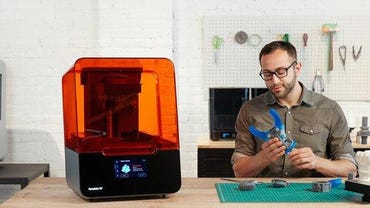
The $3,599 Form 3 is the latest generation of Formlabs well-respected resin printers. The Form 3 uses a laser to solidify resin with a high degree of accuracy and reliability. It also has a flexible imaging surface, which helps minimize the adherence problems often common to SLA resin printers. The Form 3 can be controlled via Wi-Fi or Ethernet and the company's software allows for the central management of a full fleet of printers. The precision of this machine is mind-blowing. With an X/Y precision of 25 microns and a layer height that as fine as 25 microns, you can't see layer lines, period.
But what we like best about the Form 3 SLA printer (and the earlier Form 2) is the resin cartridge and post-processing system offered by Formlabs. Resin printing is generally an unpleasant task, requiring a great deal of attention is spent to avoid coming in contact with toxic resins. Rather than pouring resin into an open vat, users of the Form 3 merely insert a resin cartridge (like a big ink cartridge) and start printing. Formlabs also offers a post-processing 3D printing system consisting of a cleaner and UV chamber, both of which are automated, making post-processing a mostly hands-off process.
LulzBot printers
Best built-like-a-tank printer series
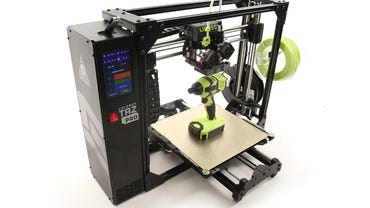
When it comes to a best-of selection of 3D printers, one brand always comes to mind: LulzBot. Although Aleph Objects, the company that produces LulzBot printers, has had some financial troubles of late, it seems to have resolved them. That's good because LulzBots are fantastic printers. My nominee has to go to the LulzBot Mini 2, which has been my personal go-to small form-factor printer since it replaced the LulzBot Mini that I've used for years. Both models are built like a tank and have never failed to produce high-quality prints.
Also: 3D printing hands-on: LulzBot Mini 2 first look
Our friends at Fargo 3D Printer Repair recommend the LulzBot TAZ Pro, "Our favorite printer in this lineup, the LulzBot TAZ Pro does great with both holding tolerances due to backlash compensation and has excellent multi-material capabilities. Our go-to for printing with water-soluble filaments or fine multi-material work." They also speak very highly of the LulzBot TAZ WorkHorse, which they describe as "a printer that operates lights-out. A favorite of business owners, military, and teachers across the globe due to its robust and very adaptable frame, a variety of tool heads available, and strong user community."
Original Prusa i3 MK3S
Best all-around prosumer hobby printer under $1,000
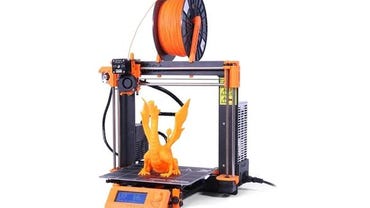
You can't fully appreciate the Original Prusa i3 MK3S without knowing the story of Josef Průša, a Czech maker and inventor. Průša was an active participant in the open-source RepRap community back in the early hobbyist 3D printing days. He designed two upgraded Mendel printers, each time simplifying the design and improving reliability. His last hobby project was the i3, a substantial improvement on earlier designs. Based on the i3 (which has been cloned by many companies around the world), Průša began producing parts for hobbyists to buy and assemble. And thus was born the original Original Prusa i3.
Fast forward nearly a decade and Prusa Research is one of the fastest-growing tech companies in Central Europe and the Original Prusa i3 series (which has had three major design iterations) and in 2016 was the most-used 3D printer in the world. What we like about the i3 MK3S is how reliable and robust it is, how smartly the device trams the build plate, and how inexpensive the machine is for all it does. Fully-assembled, the Original Prusa i3 MK3S is $999, but those with a little more time on their hands and a hankering for adventure, there's a $749 kit if you're willing to assemble it yourself.
If you're on a budget, hop on over to our best budget 3D printers list and check out the Prusa MINI+. It's one of our top picks.
Monoprice 121711 Select Mini V2
Best 3D printer under $200
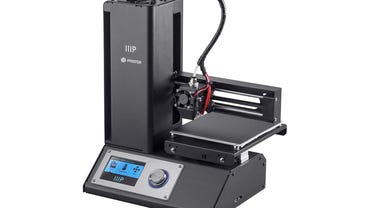
Let's be clear. There are a lot of under-$200 3D printers on the market now. But cheap doesn't necessarily mean safe. Nearly all of the under $200 printers cut corners, usually in terms of build quality and the safety of their high-voltage components. Most of these printers are built for international markets and are not subject to US-based consumer safety regulations.
And then there's the Monoprice 121711 Select Mini V2. This is a robust, well-built little printer. It is definitely on the small side for FDM printers, with a build volume of only 190 x 190 x 190 mm. That said, it works, it's reliable, it's hackable, it's very inexpensive, and it's safe. For the price, that's a total win and we recommend it wholeheartedly.
What to buy and how to think about it
So now that you've seen our selection of printers, which should you buy? That depends entirely on what you're doing. If you're a factory or production shop doing low-volume manufacturing, some of the industrial printers at the top of the list are for you. If you're a design house, you'll need to make a price/performance determination and decide if added convenience is worth a few thousand more dollars. If you're a hobbyist, your choice depends on what you're making. Makers and tinkerers will like FDM printers, but if you're a miniature gamer, jewelry designer, or model railroad enthusiast, the resin SLA printers will probably catch your eye.
In this guide, we've presented 3D printers with the price range from over $100,000 to under $200. Amazingly, all will actually create a good-quality 3D object from a foundation material. But how do you choose? Are there any good guidelines for bringing 3D printers into your office, shop, factory, or studio?
Yes, yes there are. First, I'm going to point you to an explainer I wrote last year:
Also: Everything you need to know about 3D printing and its impact on your business
Join Telstra, Samsung and Microsoft to learn how to make hybrid working more seamless and cost effective with mobile first computing.
Live Event provided by Telstra
That will give you a solid overview of the various technologies and trends with 3D printing. But now, let's talk about how to think about 3D printers.
Choosing material characteristics
When choosing a 3D printer, a good place to start is understanding the material you want to use to create objects. At its most basic, you'll need to choose between producing plastic or metal objects. 3D full metal object fabrication will place you in a high-cost category and reduce your choices considerably.
Plastic opens up your options wide. There are plastic filaments that embed metallic flecks or wooden fibers, allowing you to 3D print objects that have metallic or wooden characteristics but are still fundamentally made of plastic. The metallic objects can rust, be shined up, or be ferrous enough to attract a magnet. The wooden objects can support wood stains and finishes.
Almost all of the FDM (fused deposition modeling) filament printers we've proposed above will print a wide variety of plastic filaments. In addition to the wood fiber and metallic filaments, you can print carbon fiber, nylon, ABS plastic, flexible plastics, and more.
Generally speaking, the more exotic the filament, the hotter the hot end (the part that melts the plastic) will need to get. Look at the material specs for the filaments you want and compare them to the max temperatures of the hot ends. Generally, if a printer says it supports multiple filament types, you're good. If a printer only supports PLA or does not have a heated bed, you're limited to a more simple plastic.
FIlament printers have a range of key features that you will want to consider. Heated beds allow for better object adherence while printing, but large heated beds on open-framed printers will dissipate the heat at the edges, reducing the reliability of those prints.
Some filament printers have auto-alignment, which sets the distance between the bed and the print head. Personally, I hate aligning printers by hand, so I always look for the automatic alignment feature. It's usually on the more costly printers, but it's worth it.
Some filament printers support multiple filaments. This can be useful both for printing multiple colors or for mixing filament types, like printing a flexible hinge between two rigid hard plastic elements or printing supports in a dissolvable filament, making it easier to create a finished object. We even spotlight a filament printer that comes with a CMYK ink cartridge and it sprays ink on every layer to impart full color.
If you want to create highly-detailed objects for miniatures or jewelry, you'll want to look at a resin printer. These use light to harden plastic resin in thin layers. They're messy, but their detail is often second to none.
Cost and support
As you start digging through the material characteristics you want in a 3D printer, you'll probably notice that you will almost automatically drop into certain price/point categories. Metal printers are very expensive. Dual filament printers tend to cost more than printers with one hot end. Fully-enclosed and climate-controlled printers will cost more than open, inexpensive printers. And so on.
Buying a printer will often involve cost/benefit trade-offs and you'll need to decide which features are must-have, and which are merely nice-to-have. That, along with your budget, will help drive your choice.
I often tell folks that 3D printers are a lot like sewing machines, in that you can buy a fabulous sewing machine, but if you don't know the difference between stitches, techniques, and fabrics, you'll still wind up with a mess. 3D printers do have a learning curve, but if you're willing to learn how best to use them, each of the machines we've recommended above will do a decent job for the market they're intended for.
Go out there and build something cool.
Also, a special acknowledgment: While I have a lot of experience with desktop-level 3D printers, I haven't had much of an opportunity to use industrial 3D printers. So I turned to the folks at Fargo 3D Printer Repair who not only have experience with these printers but have a daily view into the reliability and failure points for a wide range of printer brands. They were kind enough to take the time to provide us with their recommendations, which I included in the listings above.
You can follow my day-to-day project updates on social media. Be sure to follow me on Twitter at @DavidGewirtz, on Facebook at Facebook.com/DavidGewirtz, on Instagram at Instagram.com/DavidGewirtz, and on YouTube at YouTube.com/DavidGewirtzTV.
What 3 D Printer Is Best For Mass Production
Source: https://www.zdnet.com/article/best-3d-printer/







Tidak ada komentar:
Posting Komentar